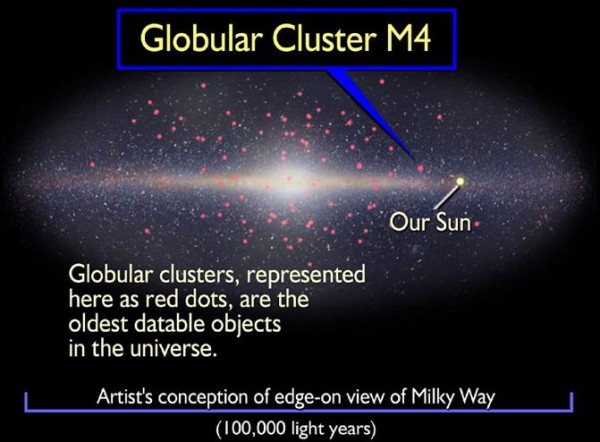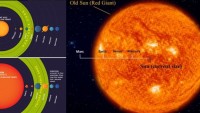Scientists Detect Oldest Sounds Emitted by Stars that 'Sing'
| Arthur Dominic Villasanta | | Jun 07, 2016 09:52 AM EDT |
(Photo : NASA) Home of singing stars: globular cluster M4
Yes, stars "sing" and there is such a thing as "stellar music." Now, a research team from the University of Birmingham said they've detected the oldest "star songs" yet discovered being emitted by a 13 billion year-old globular cluster in our Milky Way galaxy.
A study just published in the Royal Astronomical Society journal Monthly Notices reveals that astrophysicists have detected the sounds made by some of the oldest stars in the Milky Way. The source of this star song, technically called "stellar resonant acoustic oscillations," is a globular cluster of stars named M4 scientists say is some 13 billion years-old.
Like Us on Facebook
In 2015, a team of researchers found the first evidence that stars generate sounds of their own.
The sounds aren't means for human ears, however, given they're nearly a trillion hertz. In contrast, the human ear recognizes pitches from 20 Hz to 20,000 Hz.
The team that made this discovery said one of the few locations where it believe star song occurs is at the surface of stars.
"When they are accumulating new material, stars could generate sound in a very similar manner to that which we observed in the laboratory -- so the stars might be singing -- but, since sound cannot propagate through the vacuum of space, no one can hear them," said Dr. John Pasley from the University of York.
In this recent discovery linked to M4, a team from the University of Birmingham's School of Physics and Astronomy studied the resonant oscillations of stars using a technique called "asteroseismology."
These oscillations and are caused by sound trapped inside the stars and lead to very small changes in a star's brightness. By measuring the tones in this stellar music, scientists can determine the mass and age of individual stars.
This discovery opens the door to using asteroseismology to study the very early history of the Milky Way.
"We were thrilled to be able to listen to some of the stellar relics of the early universe," said Dr. Andrea Miglio who led the study.
"The stars we have studied really are living fossils from the time of the formation of our Galaxy, and we now hope be able to unlock the secrets of how spiral galaxies, like our own, formed and evolved."
The age of stars has so far been restricted to quite young stars, limiting the ability of scientists to probe the early history of the Milky Way. The study proves that asteroseismology can give precise and accurate ages for the oldest stars in the Milky Way.
"Just as archaeologists can reveal the past by excavating the earth, so we can use sound inside the stars to perform Galactic archaeology," said Professor Bill Chaplin, leader of the international collaboration on asteroseismology.
©2015 Chinatopix All rights reserved. Do not reproduce without permission
EDITOR'S PICKS
-

Did the Trump administration just announce plans for a trade war with ‘hostile’ China and Russia?
-

US Senate passes Taiwan travel bill slammed by China
-

As Yan Sihong’s family grieves, here are other Chinese students who went missing abroad. Some have never been found
-

Beijing blasts Western critics who ‘smear China’ with the term sharp power
-

China Envoy Seeks to Defuse Tensions With U.S. as a Trade War Brews
-

Singapore's Deputy PM Provides Bitcoin Vote of Confidence Amid China's Blanket Bans
-

China warns investors over risks in overseas virtual currency trading
-

Chinese government most trustworthy: survey
-

Kashima Antlers On Course For Back-To-Back Titles
MOST POPULAR
LATEST NEWS
Zhou Yongkang: China's Former Security Chief Sentenced to Life in Prison

China's former Chief of the Ministry of Public Security, Zhou Yongkang, has been given a life sentence after he was found guilty of abusing his office, bribery and deliberately ... Full Article
TRENDING STORY

China Pork Prices Expected to Stabilize As The Supplies Recover

Elephone P9000 Smartphone is now on Sale on Amazon India

There's a Big Chance Cliffhangers Won't Still Be Resolved When Grey's Anatomy Season 13 Returns

Supreme Court Ruled on Samsung vs Apple Dispute for Patent Infringement

Microsoft Surface Pro 5 Rumors and Release Date: What is the Latest?












